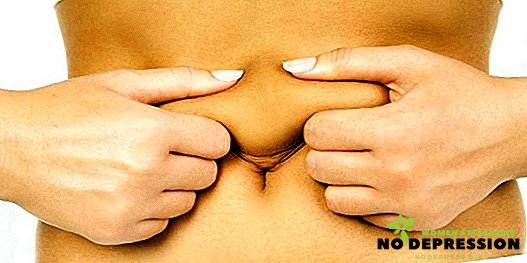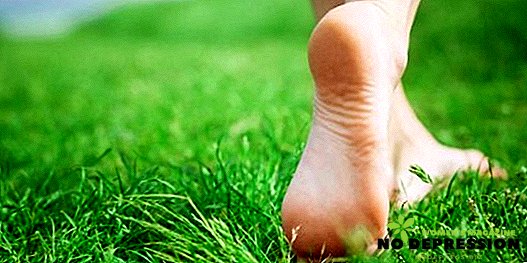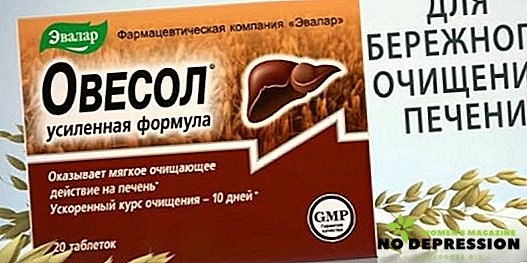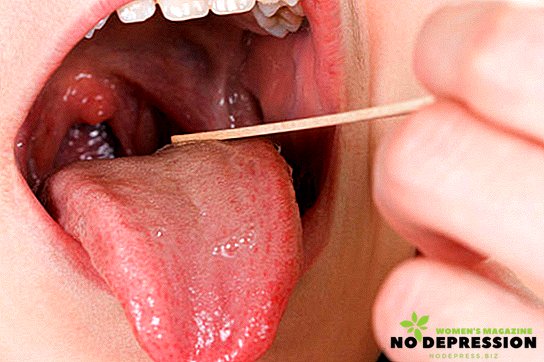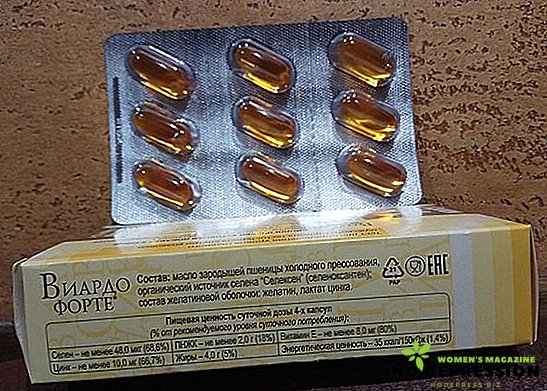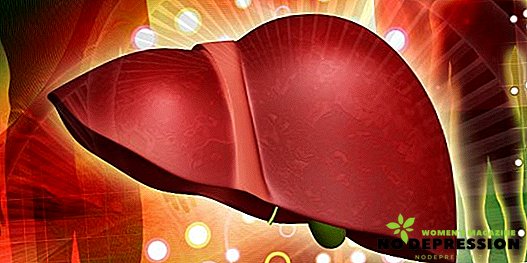The basis of the surface for repair can be a variety of materials: concrete, wood, brick, plaster. They have different properties, because the adhesion with materials for decoration will be different. And in order to make it as durable as possible, it is necessary to use a primer - impregnation for walls that penetrates to a depth of 0.5-1 cm. In addition to improving adhesion, the primer has moisture-proof and anti-bacterial properties.
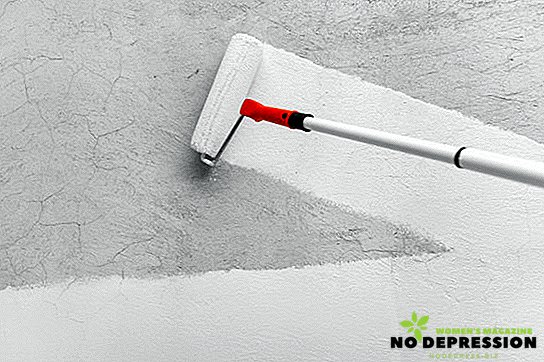
In stores you can find a large number of primers of deep penetration - you just need to choose the most suitable option.
Types of primers, their advantages and disadvantages
Before you buy a primer mixture, you should examine all its types, characteristics, reviews.
Universal option
Such impregnation is suitable for almost all surfaces in interior or exterior decoration. The most famous composition is Ceresit CT 17. The cost per 10 liter package is 650 rubles. Impregnation characteristics are as follows:
- consumption per square meter - 100 ml;
- storage conditions - from + 5 to +35 degrees;
- full drying - 5 hours after application;
- shelf life - 1 year.
The benefits include the environmental safety of the composition, the strengthening of the surface. In addition, after applying the composition, the treated surface will differ in a light yellow shade.

Another well-known option is Primer C. The cost per can of 10 liters is from 1,400 rubles. The characteristics include:
- consumption per 1 square meter - 150-250 ml;
- impregnation color - white;
- application temperature ranges from +5 to +35 degrees;
- primer drying time - from 4 hours at a room temperature of +22 degrees;
- shelf life - 1 year.
Advantages: environmental safety, lack of solvents in the composition, strength after drying. There is also a minus - Primer C is suitable only for internal work.
Acrylic Compound
Acrylic primers of deep penetration can also be used to work with any surfaces. Distinctive feature - deep penetration into the surface. For this reason, the primer can be supplemented with various fillers, for example, antiseptic additives. Due to this, the mixture can be used for work in the bathroom and other rooms with high humidity.
One of the most famous compounds is Optimist (with antiseptic additives). The cost of 10 liters - from 550 rubles. Specifications include:
- consumption per 1 square meter - about 150 ml;
- penetration depth - up to 5 mm;
- conditions of application of the composition - at a temperature of from +5 to +35 degrees;
- drying time - 120 minutes;
- Shelf life - 12 months.
The advantages of this primer can be attributed to the fact that it dries quickly, reduces the consumption of paint and varnish mixtures for coating surfaces, prevents the appearance of fungus, mold. Of the minuses can be called a rather sharp and unpleasant smell.

Another impregnation is Lacra, the cost of which for 10 liters is just over 1000 rubles. Among the main characteristics are the following:
- consumption per 1 square meter is 50-100 ml;
- penetration depth - up to 5 mm;
- drawing should be carried out at a temperature from +5 to +35 degrees;
- dries in three hours;
- shelf life - 2 years.
Among the advantages can be identified non-toxicity of impregnation, the absence of a sharp odor, the possibility of using for internal or external works, increasing the resistance of the surfaces to the fungus.
Antifungal Formulations
Mold and fungus are especially dangerous in residential areas because they lead to diseases of the respiratory system, oncology.
As part of such impregnations, there are special fungicides that destroy fungal spores. The primers themselves may be acrylic, alkyd, mineral, etc. They are used to treat surfaces that are already affected by a fungus or other microorganisms.
MILKILL (MIL KILL) - one of the most famous options. The cost per 10 liters is 750 rubles. Specifications include:
- consumption in the region of 200 ml of liquid per 1 square meter;
- penetration depth - up to 5 mm;
- the primer should be stored in a dry place at a temperature of +5 to +30 degrees;
- drying time - 1 day.
The advantages of the composition include the fact that it is suitable for work in rooms with high humidity, destroys fungus and mold. But among the minuses emit:
- Strong smell;
- only suitable for processing walls, followed by sticking wallpaper;
- A new layer can be applied only after the previous one has dried.
Ceresit CT 99 - another well-known primer, 10 l of which is sold for 750 rubles. Specifications include:
- consumption per 1 square meter - up to 100 ml;
- drying time is 10 hours;
- surface treatment conditions - at temperatures from +5 to +35 degrees.
The advantages of this primer include its environmental safety, the absence of heavy metals in the composition, the ability to use for the treatment of indoor and outdoor areas, long-term resistance to the appearance of fungus and mold.

Antiseptic impregnation
Such compositions differ from antifungal in that they do not fight against mold and microorganisms, but prevent their appearance - it can only be applied to "clean", not affected surfaces. Most often it is used for processing the walls in the bathroom, the toilet before laying tile.
Mixonit GR 43 Tiefengrund-Kreativ is one of the most popular compositions. The cost of 5 liters is 600 rubles. The characteristics of the impregnation include:
- consumption per 1 square meter - 100 ml;
- 3-4 hours - drying time after application;
- 12 months - shelf life (in original packaging).
Among the advantages of this composition, it is distinguished by the fact that it binds loose coatings well, helps to avoid the appearance of fungus and mold, can be used to treat surfaces for wallpapers, helps to reduce the consumption of paint and varnish products. Minus one - can not be used for materials that do not absorb moisture.
Eurolux E-6A. The cost for 2 l of funds - from 110 rubles, for 10 l - 420 rubles. Specifications are as follows:
- consumption per 1 square meter is 100 ml;
- colorless;
- drying time - up to 1.5 hours;
- shelf life - 1 year.
The advantages of Eurolux include the fact that it helps level the surface, is odorless, environmentally friendly and fireproof, and contains a biocide. The disadvantages include the fact that it is suitable for coating only plasterboard and mineral bases.

Facade compositions
Exterior walls are usually mineral surfaces, such as plaster, gas silicate or silicate blocks, and other materials that contain lime. Products interact with water, under the influence of which they slowly break down. To avoid this, you need to use facade primer, but only silicate or silicone.
Known mixture - Runit (silicate). The cost of 15 kg of the mixture is 2000 rubles. Features include:
- consumption per 1 square meter - up to 200 g;
- colorless;
- conditions of applying the primer - at a temperature of from +8 to +25 degrees;
- drying time - 1.5-2 hours.
Among the advantages point out that it fills the cracks. But among the minuses - the impossibility of applying the composition to coatings, which include plaster.
Another famous option is Tikkurila. The cost of 10 kg is 9000 rubles. Specifications are as follows:
- material consumption per 1 square meter - from 100 to 200 ml;
- the primer dries in 2-4 hours depending on the surface to be treated.
The advantage is that it can be used for facade paints.

Primers for concrete
Such tools are used to increase the grip of the surface, making it rough. Can be used for bases that do not absorb moisture.
The most famous composition - Knauf Betonokontakt. The cost of 10 liters is 2,600 rubles. Among the technical characteristics are:
- consumption per 1 square meter is 350 ml;
- conditions of application - at temperatures from +5 to +30 degrees;
- drying time - 12 hours.
The advantages of the primer include its alkaline resistance, the possibility of using mechanized tools for application. In addition, Knauf Betonokontakt does not lose its properties at temperatures from −40 to +60 degrees. The main drawback of the composition is that it is only suitable for interior work.

Another well-known impregnation for concrete - concrete-contact "miners". The cost of 10 kg is 400 rubles. Specifications are as follows:
- consumption per 1 square meter - about 250 g;
- application conditions - in the temperature range from +5 to +30 degrees;
- drying time is 3 hours.
The advantages of the prospector include the fact that this primer can be used for treating rooms with high humidity, it also contains antiseptics. The disadvantage is only for interior work.
Latex Primers
The main task of such primers (water and polymers in their composition) is to hide surface imperfections, such as grease, rust, stains. Can be used for processing metal, wood, concrete. Often used in combination with alkyd primer, if you need to treat the surface in rooms with high humidity.
The most famous option is the Axton, the cost of which is 5 l is 310 rubles. Characteristics of the composition are as follows:
- consumption per 1 square meter - 100 ml;
- drying time - 120 minutes;
- shelf life in factory packaging - 1 year.
The advantages include cost-effectiveness of use, the possibility of application for interior or exterior use.

Another well-known composition - Profi, the cost of which for 5 liters is 520 rubles. Among the characteristics emit:
- Consumption composition - 300 ml per 1 square meter;
- drying time - 60 minutes, subject to application in the temperature range from +5 to +30 degrees.
The advantages of the composition is that it increases the strength of the dry construction mix and has waterproofing properties.
Tips for choosing a deep penetration primer
According to experts, the best primer is one that fully meets all requirements. When choosing a composition, a number of factors should be considered:
- Place of work - for internal or external processing. If you have to work with facades, you should choose frost-resistant impregnations - acrylic and silicate mixtures will do. When working indoors, it is necessary to choose odorless formulations, such as acrylic or latex. When working in a bath or other rooms with high humidity, you should choose antiseptic compositions.
- The material of the treated surface. For example, for concrete it is necessary to use compositions suitable for absorbing bases - alkyd or acrylic. For wood, it is better to choose oil impregnations with antiseptic effect, while working with bricks - anti-alkaline, for tile - those that have antifungal effect.
- Drying time of the composition. When carrying out interior work, it is important that the primer dries out faster, because it will have to be applied in at least two layers, and the long drying time will delay repair.
- Finish This factor should be taken into account. To find out which impregnation is suitable for wallpaper, tile, putty, study the manufacturer's instructions for this information. You can choose a universal composition.
- Cost and manufacturer. When choosing a primer for deep penetration, give preference to well-known manufacturers who have proven themselves to manufacture quality compounds.




